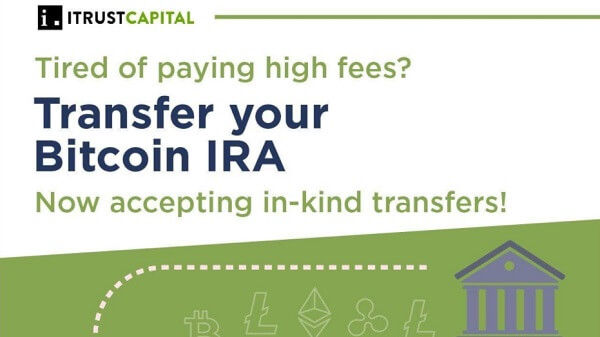
While the COVID-19 pandemic decimated certain industries like tourism and retail, other entirely new industries have emerged. Two years ago, the concept of a “metaverse” was virtually unknown. Today, the term is trending everywhere online, with new companies and funds entering the space every week — billions of dollars have already been poured into this industry. Just last week, Mark Zuckerberg announced that Facebook will become a metaverse company.
Meanwhile, few “metaverse” companies have any real scale or customers, which makes it easy for onlookers to dismiss it as a trend that may flame out. We would caution against that.
The last time we saw a boom like this was in crypto in the mid-2010s. People who jumped on the crypto bandwagon during those early days — think Mike Novogratz, Joseph Lubin, Tyler and Cameron Winklevoss, and Anthony Pompliano — are now considered to be true experts on the topic. They have also made tremendous fortunes by acting quickly when they first spotted the opportunity.
That’s because new industries can unearth massive opportunities for people who are creative and agile enough to identify new niches and reinvent themselves. They also create opportunities for the underrepresented because traditional hiring requirements for previous related work experience fly out the window when nobody in the world truly has relevant work experience. This brings back the old adage attributed to the Dutch philosopher Desiderius Erasmus of Rotterdam: “In the land of the blind, the one-eyed man is king.” If no one’s an expert, then everyone has the chance to become one.
Related: The metaverse: Mark Zuckerberg’s Brave New World
Time for the Metaverse
Now is the time for the adventurous and ambitious to plant a flag in the parcels of the nascent metaverse industry, as today’s metaverse startups will be some of tomorrow’s Fortune 500 companies. While that might sound a bit far-fetched, consider that Coinbase — now valued at more than $54 billion — was founded in 2012 when 1 Bitcoin (BTC) sold for about $12 and was something hackers messed around with in their dorm rooms.
It is at this point when an industry is taking shape — like primordial ooze — that opportunities are greatest, and not just for economic gain but also for personal brand building. When you join a company at the earliest stages in a new industry, you become not only a company co-founder but also an industry pioneer. Those early employees lay the foundation for the entire industry, shape its trajectory and set the ethos and ground rules. Around the Metaverse, a new generation of leaders will emerge. It’s an exciting time to consider becoming one of them.
Metaverse jobs will span between everything from blockchain and gaming programmers to animators, designers, marketers and even accountants, recruiters and lawyers. Small businesses in the real world could become big businesses in the Metaverse, where business owners are not burdened by the perils of the retail brick and mortar. Amazon stores and Etsy shops can become metaverse goldmines, where customers can interact with products in 3D and transact seamlessly due to the expediency of blockchain technology.
Related: Tales from 2050: A look into a world built on NFTs
Tremendous opportunities for women
Despite all this industry growth, as two women working in the metaverse industry, we often find ourselves to be the only women on male-dominated work calls. Months ago, when we first discussed the new opportunities afforded by these uncharted waters, we had a conversation that played out something like this:
Julia: Do you think the metaverse industry will look different than the crypto industry, with more women in senior roles?
Janine: Well, I have to dig a bit deeper into my career history to make that connection. In my early twenties, when I was working in private equity in New York City, I was recruited for a job in Las Vegas working for a casino gaming company. Back then, Vegas was experiencing a bit of a gold rush of its own, and they were strapped to hire local talent that was sophisticated enough to handle the extreme growth, so they recruited from the coasts. When I visited Las Vegas for interviews, I met with many women in very senior roles — which felt very different from the male-dominated workplaces I knew in New York City.
Julia: What does this have to do with job opportunities for women?
Janine: Booming times create talent droughts, which means that hiring managers have to think creatively about how to fill spots. All of that unconscious (and conscious) bias that often keeps women out of the prime seats is shoved aside in the interest of just filling the job that needs to get done. And the result is that the women who show up during these rare windows of opportunity often find themselves in the right place at the right time. They earn seniority and experience that makes them invaluable. That’s precisely what is happening in the metaverse today.
Put simply, there are enormous opportunities for women in the metaverse industry today. A simple search for the word “metaverse” on LinkedIn jobs pages reveals few jobs anywhere other than Roblox. But at the current rate, there will be thousands of metaverse jobs in the very near future. With our currently low unemployment rates, opportunities will abound.
Scientific evidence suggests that women are more risk-averse than men, which may (among many, many other reasons) explain why women are underrepresented in boardrooms, C-suites and other positions of power. Arguably though, much of this disparity in risk-taking behavior among men and women can be attributed to “nurture” and societal norms that have been fostered rather than “nature.” Risk tolerances and attitudes are not fully immutable, and the Metaverse presents an opportunity to rewrite history and build a more equitable (albeit virtual) society.
Web 3.0 is here, and virtual worlds represent a blank slate — a chance for women, not just men, to get in early and make their mark on the Metaverse. (Notice earlier in this piece we mentioned pioneers who dove into crypto in the mid-2010s, nearly all of them men.) History has a tendency to repeat itself.
But this time, things can be different. Here’s what we know:
It’s still the early days for the Metaverse.Early days mean high risk.High risk can mean high reward.
Core to the very idea of the Metaverse is that everyone is an avatar. In the Metaverse, talent trumps any bias, including physical appearances. The Metaverse is opening up an entirely new parallel economy for participants who are willing to immerse themselves in the global communities that are building them. Now is the time for women to take risks and jump in.
This article was co-authored by Janine Yorio and Julia Schwartz.
This article does not contain investment advice or recommendations. Every investment and trading move involves risk, and readers should conduct their own research when making a decision. The views, thoughts and opinions expressed here are the authors’ alone and do not necessarily reflect or represent the views and opinions of Cointelegraph.
Janine Yorio is the co-head of Republic Realm, a metaverse/NFT innovation and investment platform. Previously, she was CEO of Compound. Janine holds a BA from Yale University.
Julia Schwartz is the director of Republic Realm, a metaverse/NFT innovation and investment platform. Previously, she managed investor relations at Neuberger Berman Private Equity. Julia holds a BA from Georgetown University.





 Bitcoin
Bitcoin  Ethereum
Ethereum  Tether
Tether  Solana
Solana  USDC
USDC  XRP
XRP  Lido Staked Ether
Lido Staked Ether  Dogecoin
Dogecoin  Toncoin
Toncoin
Be the first to comment